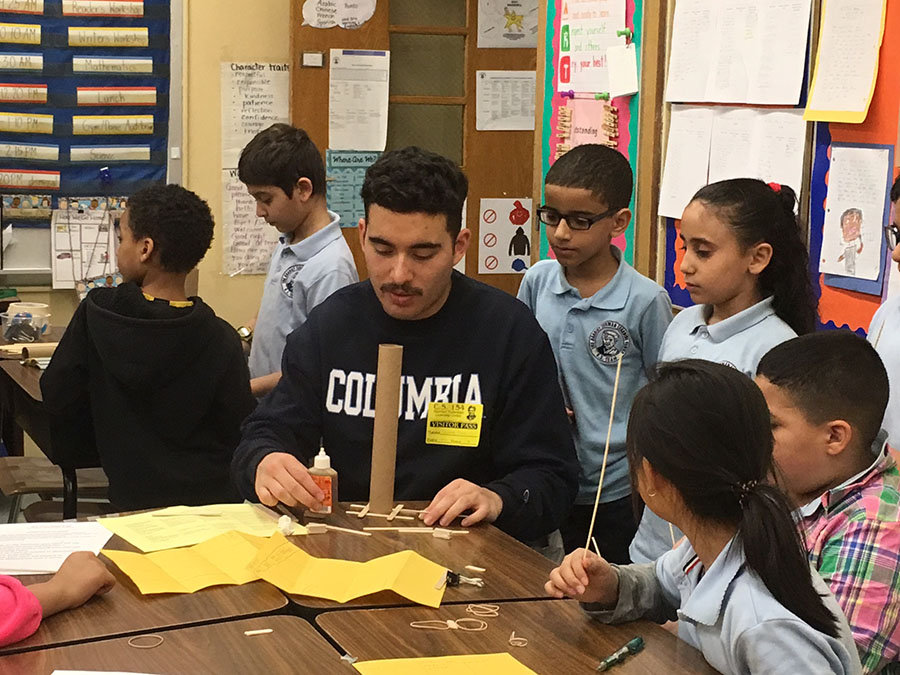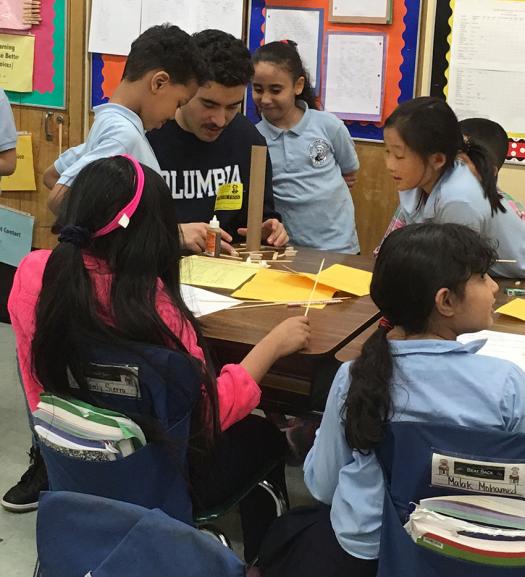Uber for science outreach: how this nonprofit is spreading STEM

Getting more students interested in STEM is the first step to cultivating a lifelong love of science. Matt Schaff believes that science outreach is the key to engaging more students, and developed Sci-Inspire to simplify the process.
Students need role models to encourage them to pursue STEM. Via an online network, Sci-Inspire brings together college-aged science students and allows them to share their knowledge and insight with students in their communities. Currently, Sci-Inspire has pilot programs at Columbia University’s Fu School of Engineering in New York and George Washington University in Washington, D.C. Teachers post opportunities on the app and are matched with students who have been trained through Sci-Inspire.
“I think of it as the Uber for science outreach,” he said.
Thanks to the Society for Science & the Public’s STEM Action Grant, which provides funds to organizations that are bringing STEM to their communities in innovative ways, Sci-Inspire has been able to train volunteers by developing and delivering four new training session videos.
“Our partnership with Society for Science & the Public enables us to supercharge our volunteer training regimen. Without it, we would not be able to fund these training sessions that we are videotaping, integrating with the website and standardizing. It is quite critical,” Matt said.
As an undergraduate student at the University of Pittsburgh, Matt was involved in science outreach programs such as Pitt Science Outreach. In the program’s mobile science lab, Matt joined other students and traveled to the boroughs of Pittsburgh, bringing programs to students around the city.
I felt like I was spending my hours in life improving people’s lives, exciting people about science, and bringing scientific smiles to kid’s faces—it gave me such joy.
“I felt like I was spending my hours in life improving people’s lives, exciting people about science, and bringing scientific smiles to kid’s faces—it gave me such joy,” Matt said. “I wanted to devote some part of my life to at least trying to expand that experience that I had to more undergraduate and graduate students.”
Matt’s desire to spread that joy led him to develop Sci-Inspire, which he describes as a social network for science outreach that connects science educators with science outreach programs at K-12 schools.
“I care very deeply about social justice, about how science belongs in the country and belongs to humanity,” he said.
Learn more about the Society for Science & the Public’s STEM Action Grants.
In Spring 2017, Sci-Inspire registered 23 new volunteers at Columbia. Teachers in schools that work with Sci-Inspire volunteers have said that before Sci-Inspire, it was very hard for them to find adequate help from excited STEM volunteers, but now it is easy. Matt says that is exactly what Sci-Inspire is all about—making science outreach easier.

“I see science outreach volunteers as science evangelists,” he said.
Matt is motivated by the cause of bringing science education to schools, especially for kids who don’t have as much in terms of resources and activities.
“Sci-Inspire and science outreach holds the promise to excite kids about science and STEM fields who otherwise wouldn’t be,” he said.
As for the future of Sci-Inspire, Matt says he would like to prove that Sci-Inspire can function as the service that fills in the gap between science outreach programs at universities and other institutions.
“Science outreach has been beneficial to scientific research. We can improve attitudes and aptitudes in STEM fields and towards STEM in general by exciting kids in afterschool and in-school extra enrichment science projects and science mentoring.”


